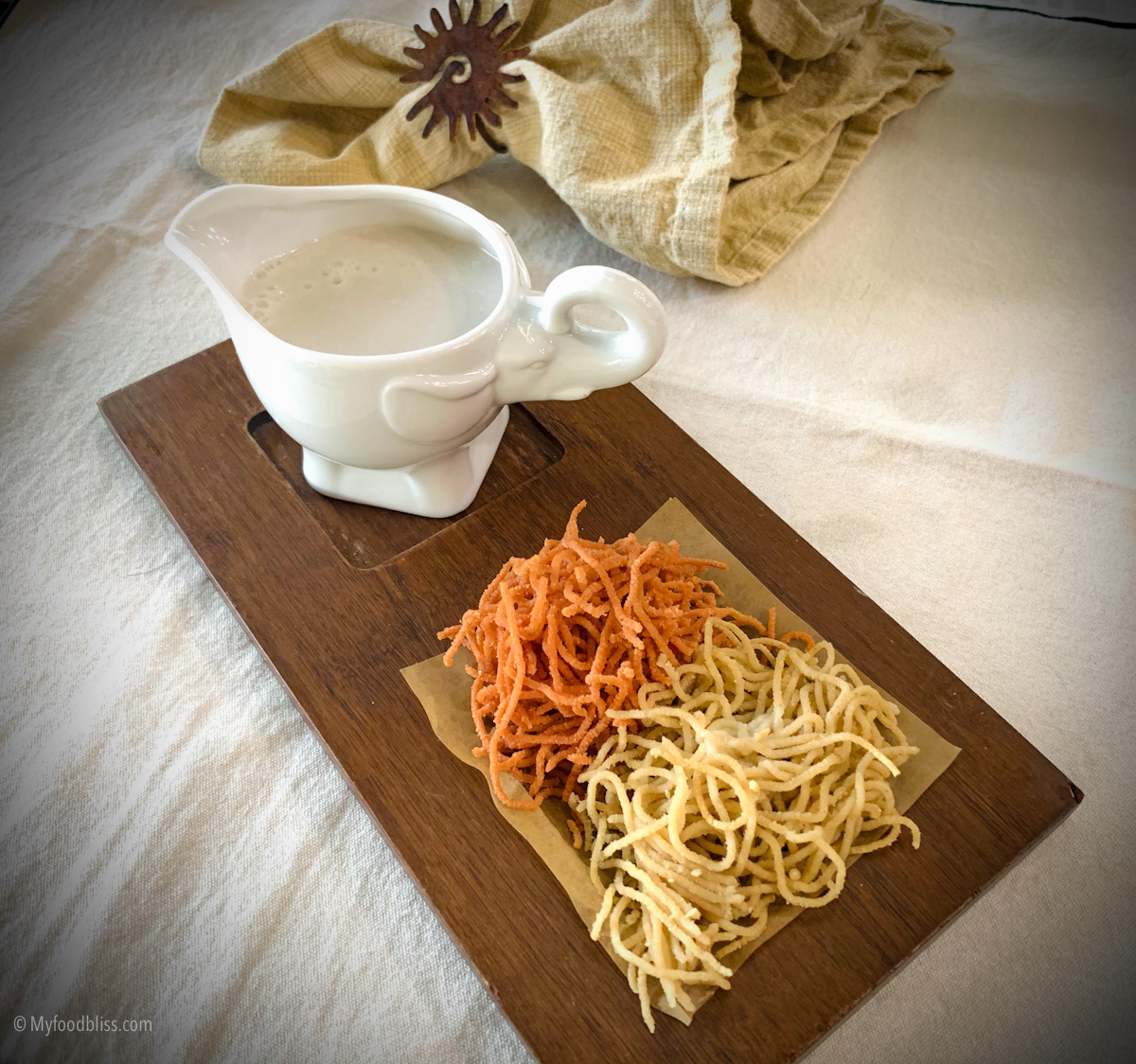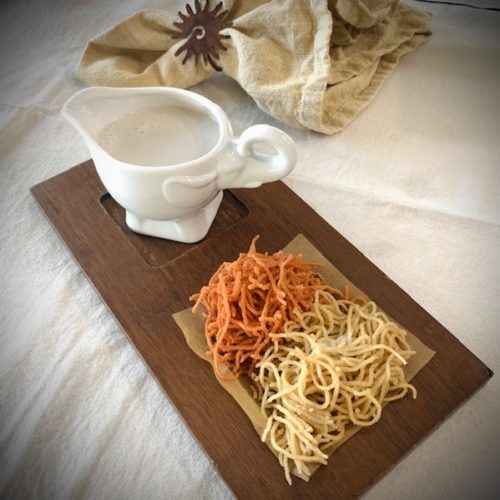Quinoa Beetroot Idiyappam with sweet coconut milk- vegan, gluten free

Idiyappam, translating to ‘broken appam’ comes originally from Tamilnadu and Srilanka. These string hoppers , made of rice flour traditionally served with sweet coconut milk, are popular breakfast in Kerala. It also makes a good dinner with vegetable or chicken stew. A simple, healthy recipe from God’s own country. The blank canvas nature of the Idiyappam and the ease of making it, drew me to make my take on it. A simple alternative to my staple idli in my opinion.

Quinoa Beetroot Idiyappam with sweet coconut milk
An easy and healthy south Indian ethnic breakfast with nutritious twist.
Equipment
- Idiyappam or murukulu press
- Idli maker with idli plates
Ingredients
- 3/4 cup Quinoa flour organic
- 1/2 cup Rice flour organic
- 3/4 cup Warm water
- 1/4 cup Beet root steamed & pureed
- Salt to taste
Instructions
- In a pan bring water to boil , and take off the stove. In a bowl, add the quinoa flour, rice flour , salt to taste. Now slowly add water while mixing the dough. make two portions of the dough, add beetroot puree to one part. Make soft non sticky dough and knead it for 2 minutes.
- Take a idiyappam maker ( Murukulu press ) , fill it with portion of dough , and make the noodles on greased idli pan molds. You can make the white colored noodles and the pink colored beetroot noodles. Steam in idli maker for 8-10 min.
- Serve warm with sweet coconut milk . Also can be served with different kinds of stews, kurmas. Better eaten fresh and not stored for more than few hours .
Notes
* You can use store bought coconut milk with addition of little sugar in it , or extract the coconut milk from fresh coconut.
To extract the milk, blend grated fresh coconut in a blender with little water and strain the mixture . Repeat the process bu adding the residue back to the blender and then strain again. Continue till the residue does not yield any milk and is dry.
